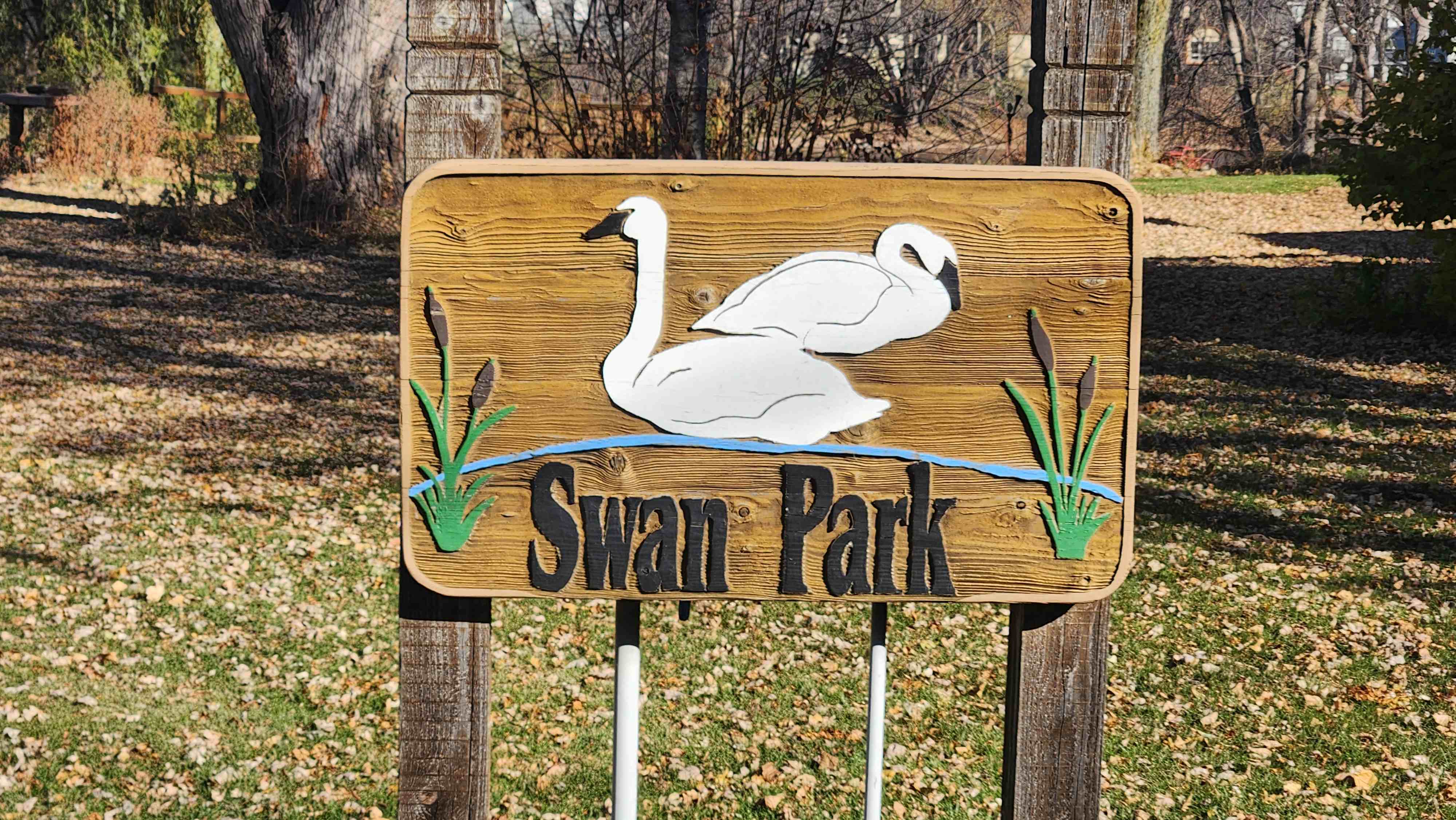A River That Turns White Each Winter
On the east side of Monticello along the Mississippi River, there’s a stretch of open water that transforms into a sea of white every winter. Known as Swan Park, this small riverside area becomes home to thousands of trumpeter swans. When temperatures fall and lakes freeze, this warm-water bend of the river remains open—drawing swans, ducks, geese, and visitors from across Minnesota.

A Look Back: From Near-Extinction to “Swan City”
Trumpeter swans were once nearly wiped out in the United States, with fewer than 70 remaining in the 1930s. Restoration efforts began in earnest in Minnesota during the 1980s, including releasing swans near Monticello. The warm water discharged upriver created perfect wintering habitat, encouraging more swans to return each year.
Today, Monticello proudly embraces the nickname “Swan City,” with over a thousand swans typically gathering in peak season.
The Swan Lady: Sheila Lawrence’s Lasting Legacy
No story of Swan Park is complete without mentioning Sheila Lawrence, known lovingly as the Swan Lady or Bird Lady of Monticello.
Starting in 1988, Sheila began feeding a small group of swans that visited her backyard. Word spread among the swans, and soon her winter visitors numbered in the hundreds—eventually growing to more than 1,500 birds each season. She paid for most of the feed herself, spending countless hours caring for the birds and educating visitors who stopped by to watch the spectacle.
Sheila passed away in 2011, but her impact lives on. Her husband Jim and volunteers continued her work, and the city eventually developed a designated public viewing area—Swan Park—ensuring the swans remain a cherished part of Monticello’s identity.
Visiting Swan Park Today
Swan Park sits along Mississippi Drive and provides a clear, close-up view of the winter gathering. From December through February, daily feedings help draw in large numbers of swans, creating a noisy, breathtaking scene as the birds interact, call, and compete for space.
Interpretive signs share the history of the swans, and a seasonal live “Swan Cam” lets people watch the activity online. While the best viewing months are mid-winter, the riverfront remains a pleasant stop year-round. Just be sure to dress warmly—standing riverside in January can feel far colder than expected.
Life of a Trumpeter Swan
Most of the swans seen at Monticello are part of Minnesota’s thriving statewide population. After nesting on lakes throughout central and northern Minnesota, they migrate to ice-free waters when winter arrives. Family groups—including gray-feathered juveniles called cygnets—often stay together through their first winter.
By spring, the birds disperse to nesting territories across Minnesota, returning to the Monticello area only when temperatures drop and their summer lakes freeze.
Exploring Monticello and the Area
After viewing the swans, visitors can warm up in nearby cafés and explore local shops. Monticello is conveniently located just off I-94, making Swan Park an easy stop for travelers. For those heading farther north, it’s a natural addition to any winter road trip.
Why Swan Park Matters
Swan Park is more than a picturesque stop—it’s a remarkable wildlife success story. A species once on the brink of extinction now gathers here in astonishing numbers, thanks to both state conservation efforts and the dedication of one woman whose love of swans sparked a community tradition.
Swan Park stands as a symbol of hope, preservation, and the incredible bond between Monticello and its winter visitors. Whether you’re a birder, a photographer, or simply someone who appreciates Minnesota’s natural wonders, this is a place that leaves a lasting impression.
Happy Travels~
